Special Reports are longer, often more technical, documents consisting of entire articles, government statements, and other documents relevant to security and peace in Northeast Asia.
USCINCPAC Inventory of Unpublished International Agreements (IACS)
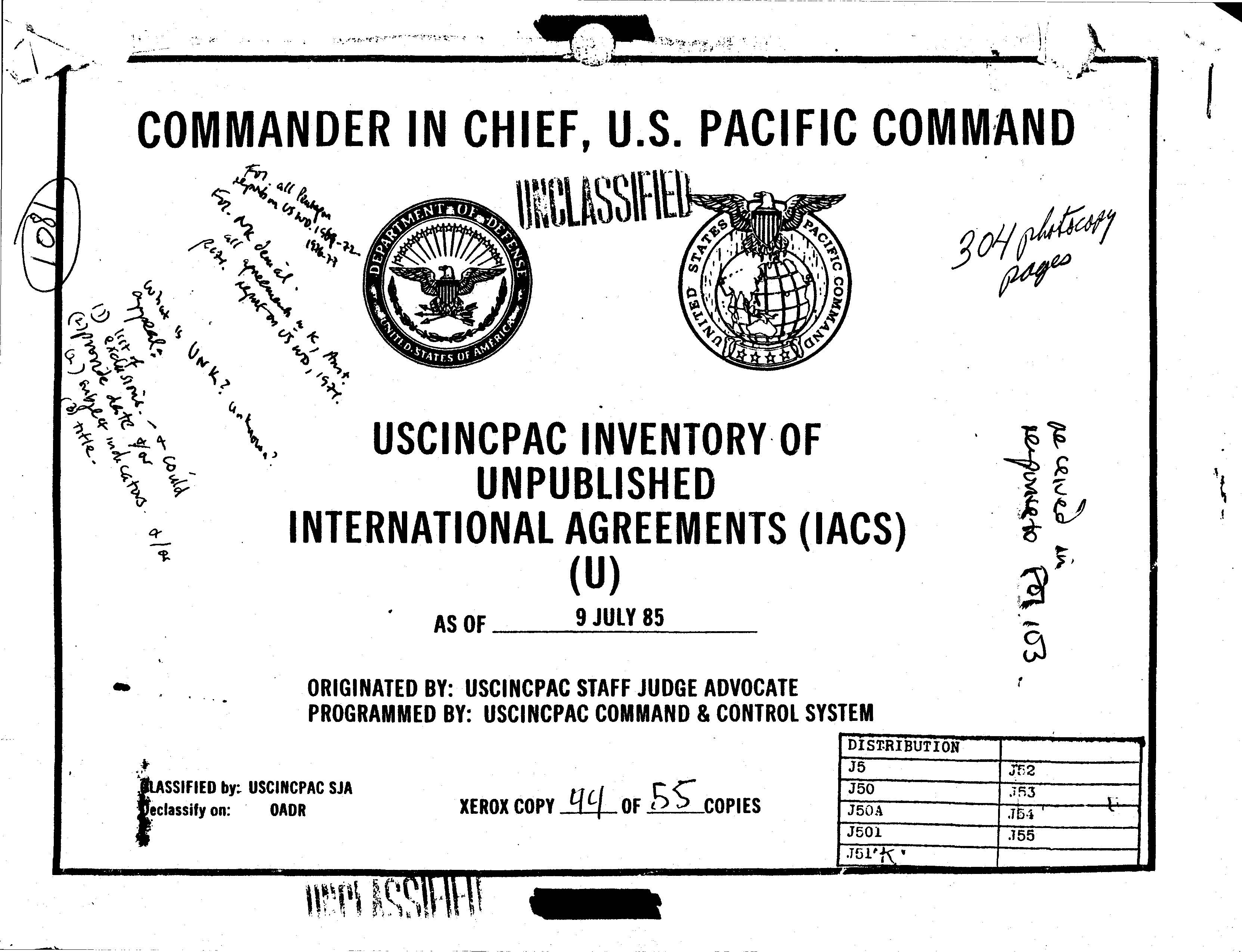
This July 9, 1985 bibliographic list of unpublished international agreements, prepared by the Commander in Chief, U.S. Pacific Command Staff Judge Advocate, includes administrative countries, conclusion dates, effective dates, duration and signers for each unpublished agreement.
This report was released to the Nautilus Institute under the US Freedom of Information Act (FOIA).
Go to the articleThe Roles, Missions, and Relationships of Pacific Command Headquarters
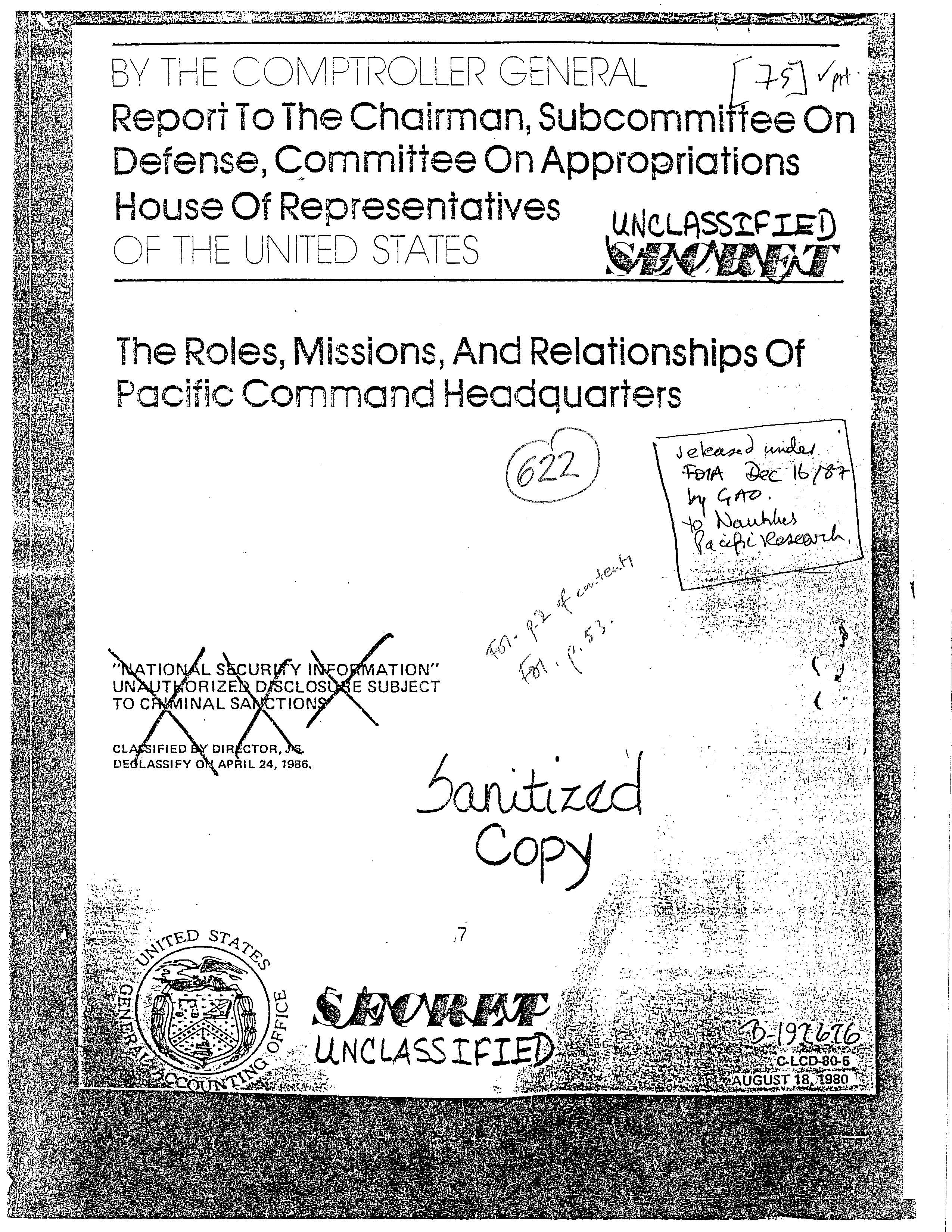
This 1980 report, prepared by the Comptroller General, reviews the roles of the Commander-in-Chief, Pacific, and his unified command structure. This report provides 1) detailed information on the unified command’s missions, specific tasks, and functions, 2) the number and grade of personnel assigned throughout the command, 3) the cost to maintain the Commander-in-Chief, Pacific, and 4) an assessment of the Commander-in-Chief’s, Pacific, role in training and other areas.
This report was released to the Nautilus Institute under the US Freedom of Information Act (FOIA).
Go to the articlePacific Command Multinational Strategy
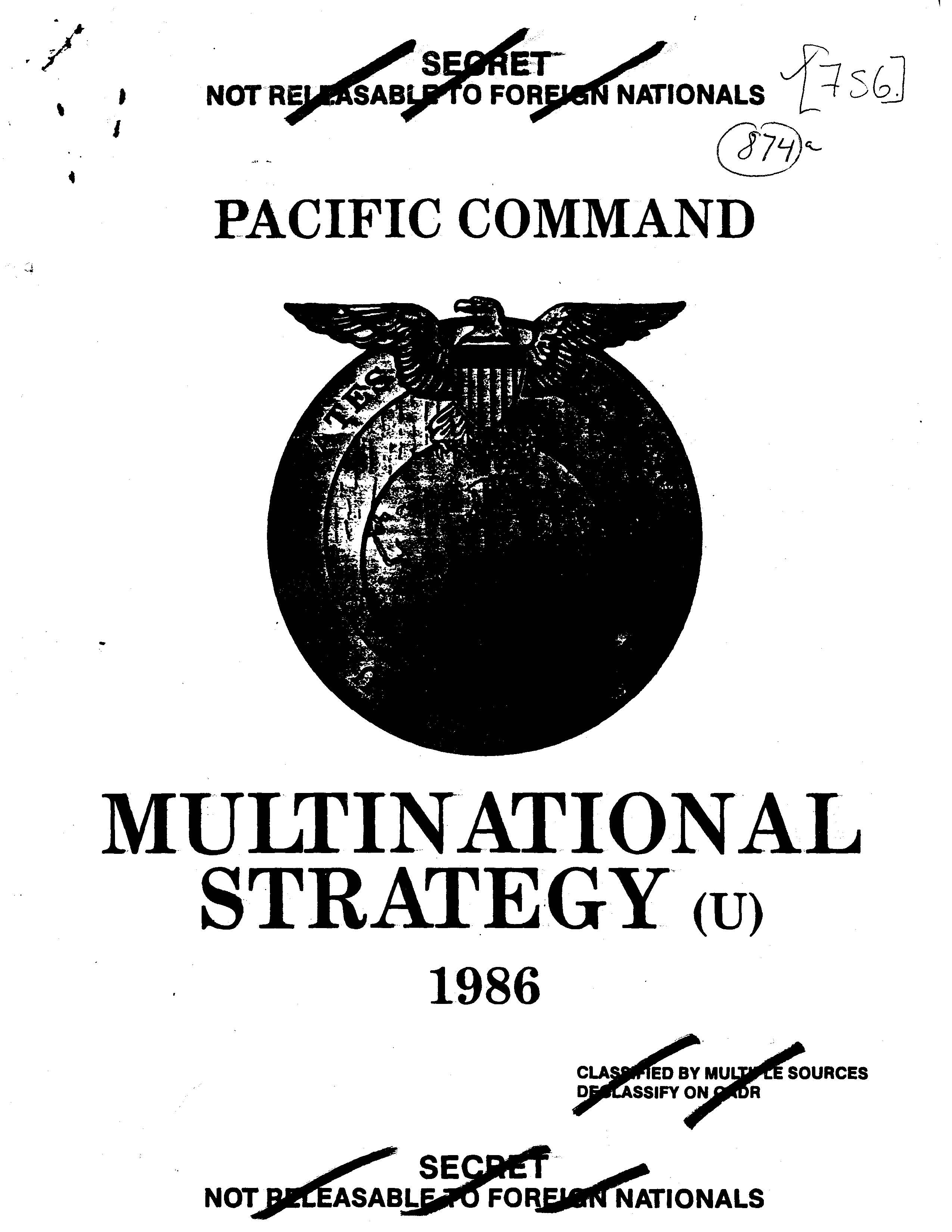
The United States Pacific Command (USPACOM) Multinational Strategy (MNS), published in 1986, defines USPACOM objectives in working with each nation in the pacific theater.
The report states that “the need for a multinational strategy was first expressed in the Defense Guidance budget of President Reagan’s administration. The Defense Guidance stated that global strategy required the U.S. and its allies to contain and reverse the expansion of Soviet control and military presence throughout the world.”
The MSN thus examines the objectives of the USPACOM in working with multiple nations. The report states that “the USPACOM Stategy is built primarily on a foundation of bilateral relationships. Larger regional coalitions, to the extent that they can exist, depend on these bilateral relationships and the interactions of the coalition members.”
This report was released to the Nautilus Institute under the US Freedom of Information Act (FOIA).
Go to the articleAn Analysis of the United States Army Command and Control Organization in the Pacific Theater: World War II to 1983
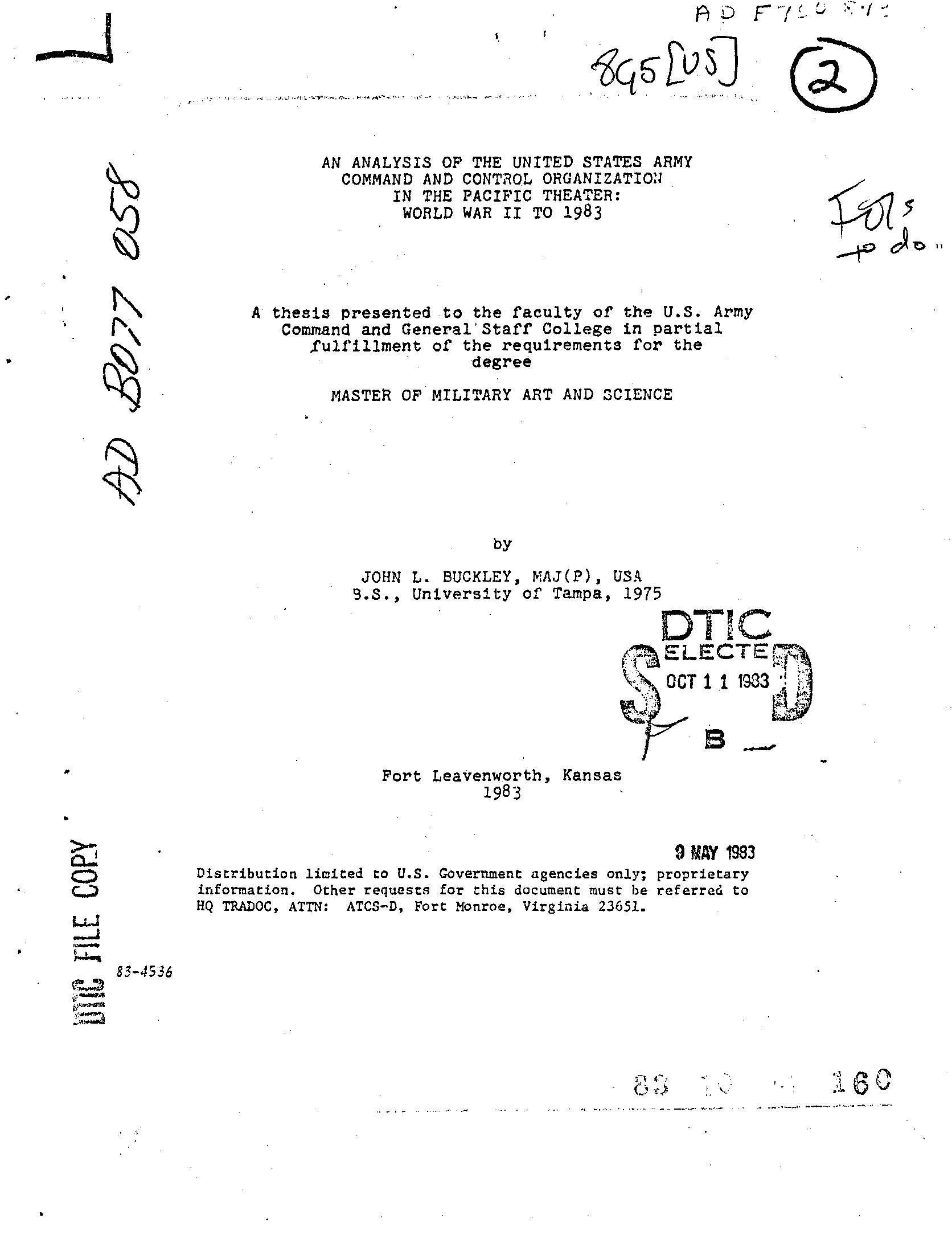
This 1983 report by John L. Buckley “examines the need for reorganizing the United States Army command and control structure in the Pacific theater both to meet peacetime requirements and to ensure an effective transition to war. The investigation is focused on an analysis of historical experience, contemporary issues in the theater, and the results or the five most recent studies on the subject. The study postulates a detailed reorganization proposal, beginning with the establishment of a Northeast Asia Command.
Conclusions reveal that or the Army structure must be done in a joint context and must accommodate the sensitivities and complexities of both military and political requirements. The current structure, although workable, is not optimal to ensure a transition to regional, theater, or global war. Should an effective remedy not be applied before the outbreak of hostilities in the region, the price of transition will be expensive in both time and resources. That remedy should be in the form of a Northeast Asia Command.”
This report was released to the Nautilus Institute under the US Freedom of Information Act (FOIA).
Go to the articleFar East Command Standing Operating Procedure No. 1 for Atomic Operations in the Far East Command
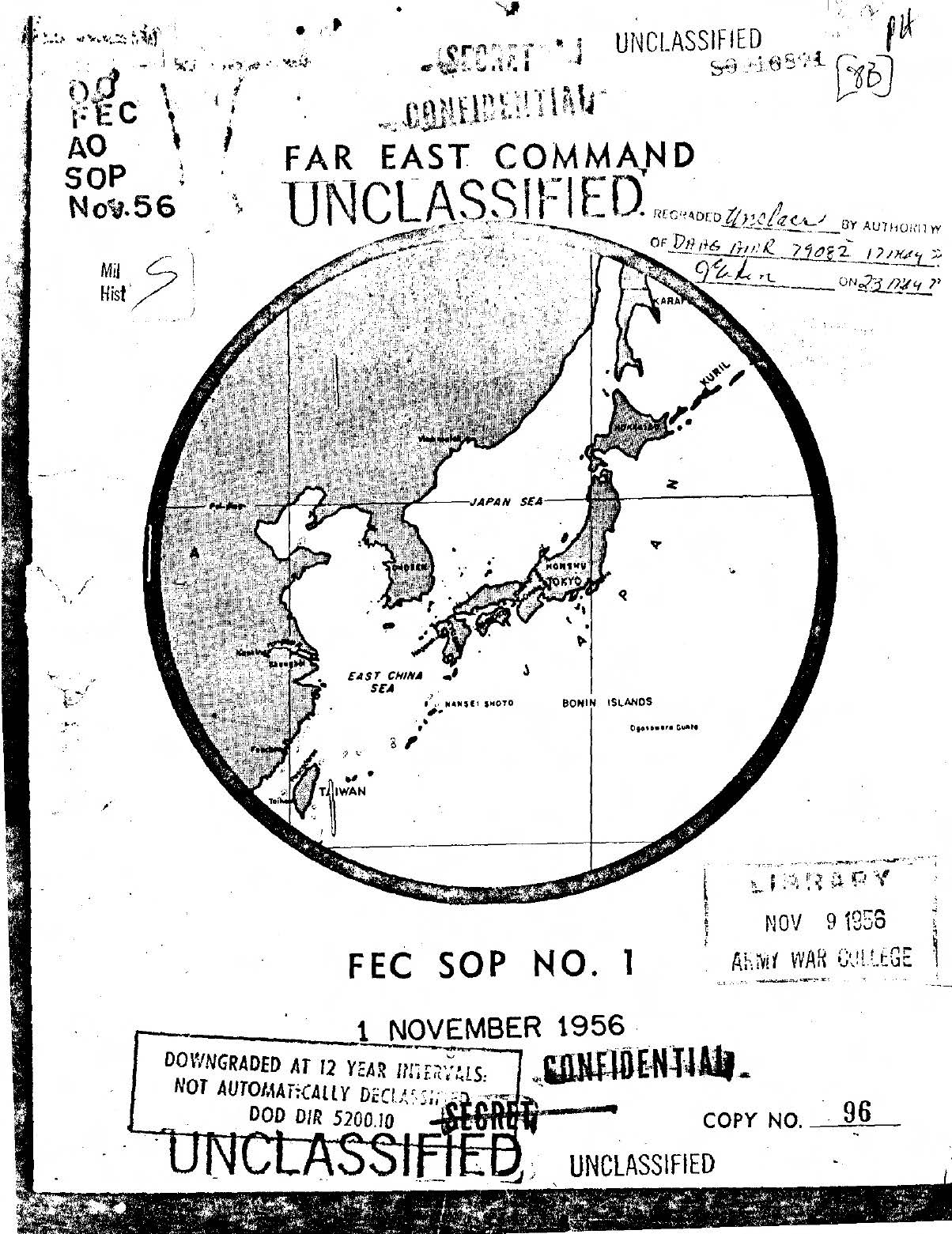
This 1956 report was “promulgated for the purpose of establishing normal procedures which will ensure the most efficient and expeditious employment of atomic weapons in accordance with JCS policy…Upon initiation of hostilities, on a scale warranting the use of atomic weapons, it is expected that Commander-in-Chief, Far East (CINCFE) will be authorized to employ atomic weapons, in the accomplishment of the theater mission…This standing operating Procedure (SOP) established the procedure to be used in the Far East Command (FEC) for the control and expenditure of atomic weapons. The procedures set forth herein shall be adhered to by all commands concerned with the planning for and execution of atomic strikes…”
This report was released to the Nautilus Institute under the US Freedom of Information Act (FOIA).
Go to the articleExtended Nuclear Deterrence in Northeast Asia
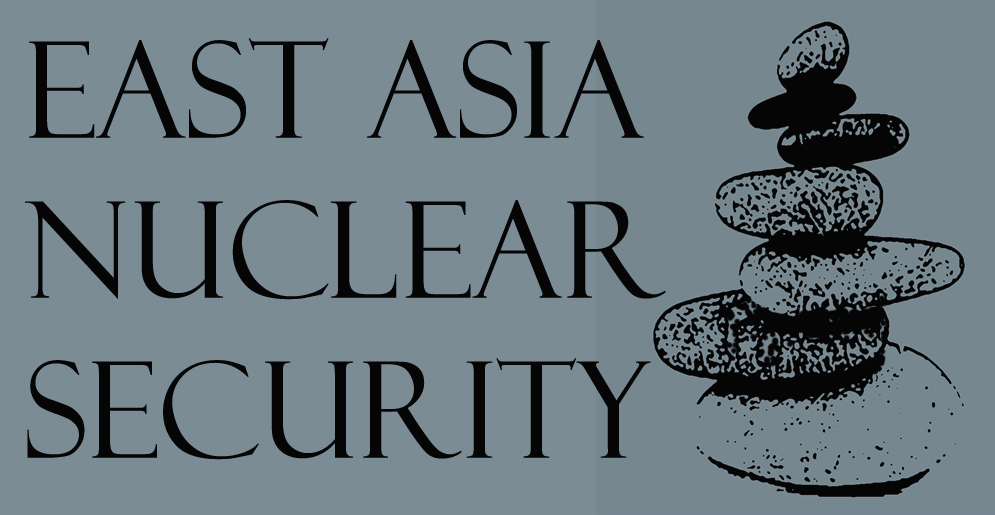
Jeffrey Lewis argues that US allies such as Japan have been mislead by the manner in which past administrations have sought to emphasize the strength of their extended deterrence commitments by reference to particular weapons systems in that role. Lewis writes that “there is no specific commitment to use any of those nuclear weapons in defense of Japan – or any other ally.”
Rather, Lewis states, “it is time to be honest that the primary source of nuclear deterrence for US allies comes from the strategic triad of intercontinental ballistic missiles, submarine launched ballistic missiles and bombers.” He concludes that “US nuclear weapons continue to play role, albeit a declining one, in meeting US security commitments. The US is committed to defending Japan, but the use of nuclear weapons neither necessary nor desirable in the current strategic environment.”
Jeffrey Lewis is an Adjunct Professor and Director of the East Asia Non-Proliferation Program at the Monterey Institute of International Studies.
A version of this report was originally presented at the East Asia Nuclear Security workshop held on November 11, 2011 in Tokyo, Japan.
Go to the articleSeconds Away From Midnight: U.S. Nuclear Missile Pioneers on Okinawa Break Fifty Year Silence on a Hidden Nuclear Crisis of 1962
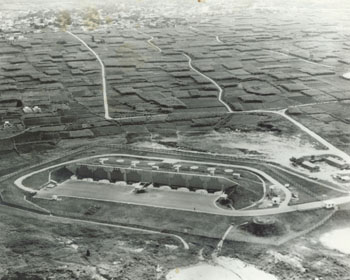
Jon Mitchell states that “six months prior to the Cuban Missile Crisis…a parallel drama played out on the other side of the world as the U.S. secretly brought near-identical missiles to the ones the Russians stationed on Cuba to another small island — Okinawa. While the full facts of that deployment have never been officially disclosed, now for the first time three of the U.S. Air Force’s nuclear pioneers have broken the silence about Okinawa’s secret missiles, life within the bunkers and a military miscalculation of apocalyptic proportions — the targeting of unaligned China at a time when China-Soviet polemics were in full public view.”
Jon Mitchell is a Welsh-born writer based in Yokohama and represented by Curtis Brown Ltd., New York. He teaches at Tokyo Institute of Technology and is an Asia-Pacific Journal associate.
Go to the articleMRBM’s in the Pacific
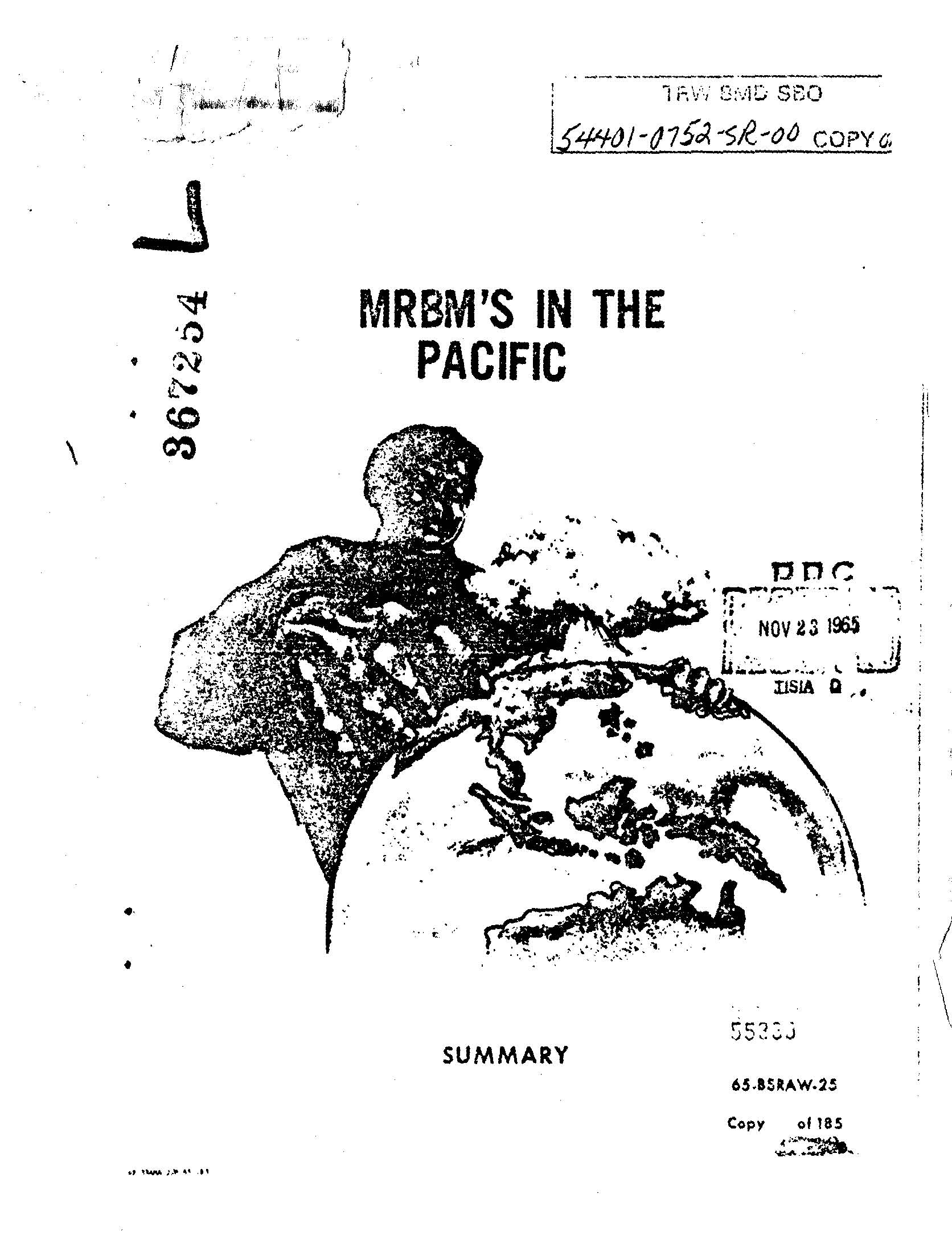
This 1965 report, commissioned by Secretary of Defense Robert MacNamara, was directed “to determine optimum characteristics and employment of MMRBM-type weapon systems for maximum effectiveness in the Pacific Theater… [and] define optimum and alternative weapon system characteristics, operational concepts, force sizes, deployment schemes and development schedules and costs.” The report concludes that “the Flexible Theater Missile provides the optimum capability to satisfy both the political and military requirements. If political considerations dictate an early deterrent and show of force, the A-1 missile system could be used as an interim capability.”
This report was released to the Nautilus Institute under the US Freedom of Information Act (FOIA).
Go to the articleWartime Interoperability Problems Posed by Differences in South Korean and United States Army Tactics
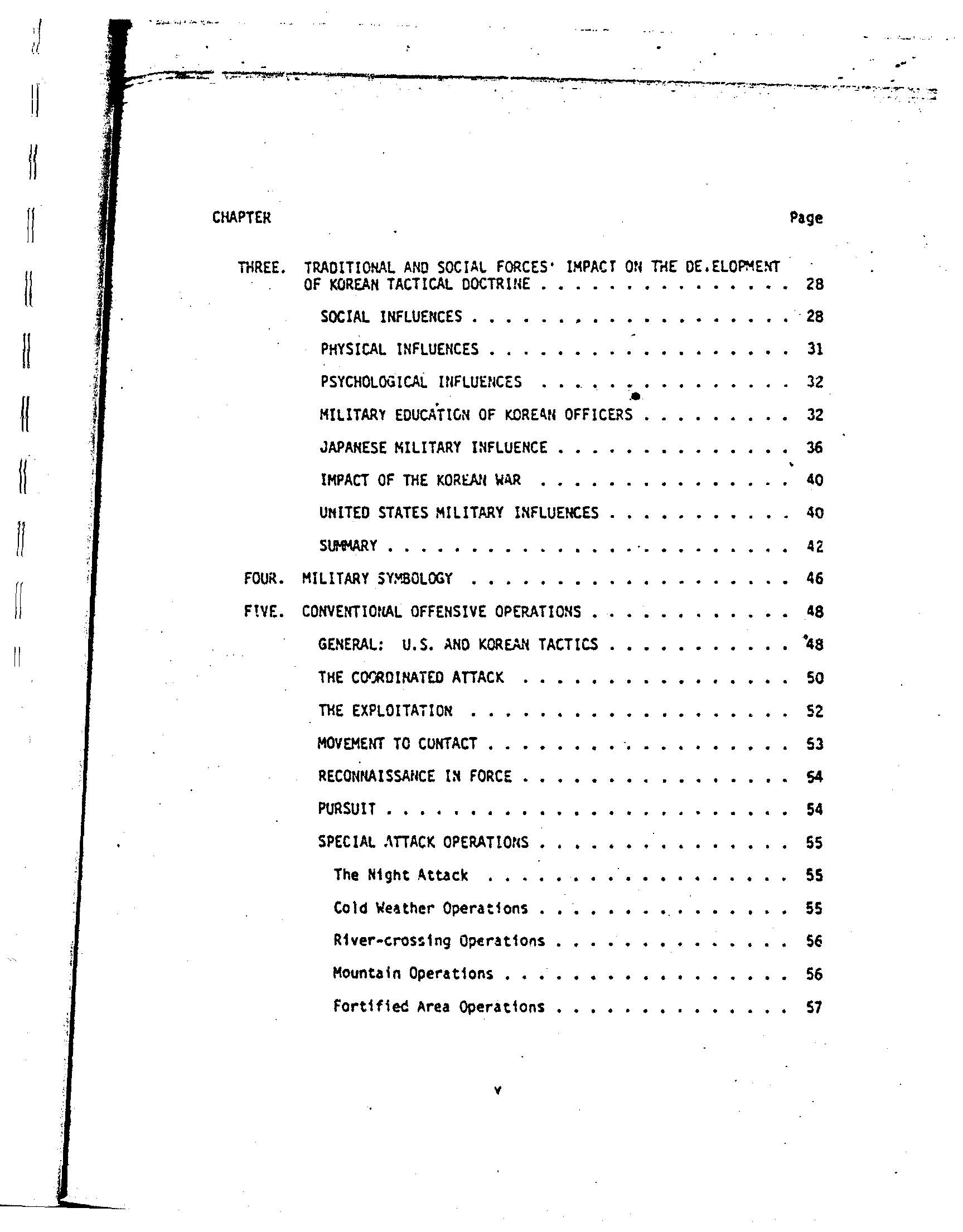
In this report, prepared for the United States Army Command and General Staff College in 1980, James M. Simpson analyzes the differences between South Korean and U.S. Army tactics. The report considers historical, social, psychological and physical influences on conventional attack operations, defense tactics, “special” operations and unconventional warfare tactics. The report also examines the degree to which differing tactics pose problems to combined operations and provides recommendations to resolve them.
The report states that “one weakness in the American forces’ relations with the Republic of Korea (R.O.K.) Army over the past several decades has been an assumption that the Koreans have patterned themselves after the Americans. Although the Korean Army has patterned many of its tactical concepts after the American tactics … they are independent thinkers and have developed a form of fighting which is consistent with the Korean personality, terrain and perceived threat.”
This report was released to the Nautilus Institute under the US Freedom of Information Act (FOIA).
Go to the articleMind the Gap Between Rhetoric and Reality
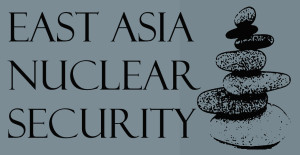
Roger Cavazos considers two bounded cases of an artillery attack on Seoul. The question is pertinent since it bears on whether there is conventional stability on the Korean Peninsula. If there is a conventional military stability, that is neither South Korea nor North Korea have the military capacity to successfully invade then both parties have an interest in cutting the Gordian knot of present relations. Legal frameworks such as a Korea Japan Nuclear Weapon Free Zone are far cheaper, less resource intensive yet still confrontational enough to relieve some pressure of an antagonistic relationship. The conclusion is that there is a conventional military stability which allows for the time and effort to seek alternative resolutions such as a Korea Japan Nuclear Weapon Free Zone which allows the DPRK to trade almost no cost legal framework for a tangible security guarantee.
Roger Cavazos consults on Northeast Asia security. He is recently retired from a 22 year career in the United States Army with assignments at tactical, operational, and strategic levels.
This report was originally presented at the East Asia Nuclear Security workshop held on November 11, 2011 in Tokyo, Japan.
Go to the article
